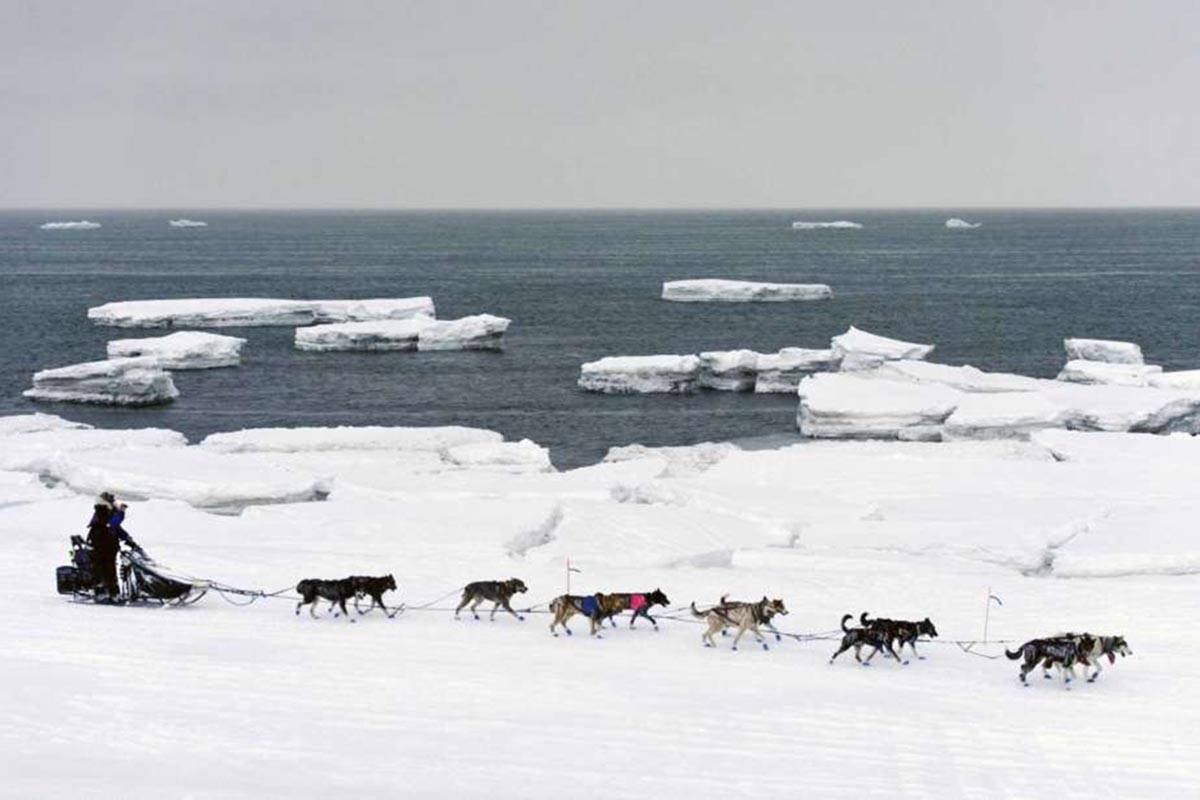Shrinking sea ice, melting permafrost, rising temperatures and acidifying seas offer both challenges and, perhaps, opportunities for Alaska, said a chief scientist for the International Arctic Research Center.
“It’s the higher latitudes that are warming more than any part of the hemisphere or any part of the world,” said John Walsh, a chief scientist at IARC, part of the University of Alaska Fairbanks. “We are at a ground zero for the warming. At the higher latitudes, things play out the fastest.”
Walsh was a keynote speaker at the Juneau Economic Development Council’s Innovation Summit, opening at Centennial Hall, Wednesday. The summit is meant to consider how businesses in Juneau and Alaska at large can thrive in a changing climate.
“Alaska is at the vanguard of environmental change, there’s no getting around that,” Walsh said, addressing a crowded Centennial Hall. “Climate change and its impacts are detectable and projected to increase in the future.”
Some of the most measurable statistics tracking the changes include the shrinking sea ice and rising temperatures in both the land and sea ice. In the 1960s, when the Prudhoe Bay oil discoveries were made, pipelines and tankers were both considered for conveying the oil south to consumer markets. A massive sealift of equipment was impeded by some of the worst sea ice conditions this century, Walsh said. But that set of circumstances changed.
“In the last few years, the Russians have started to use the tanker option to ship LNG from the Yamal plant,” Walsh said, talking about Russian tankers traversing the Arctic Ocean efficiently. “If we had started 10 years later, we might not have had the pipeline. We might have had tankers for four or five decades.”
The sea ice is also having more direct impacts on the communities that grew while relying on its presence in the winter.
“What stands out there is the drop off the cliff so to speak in the last couple of years,” Walsh said. “There are impacts in that type of change. One of those is for local communities who rely on the ice for transportation. There are increasing open water periods during the winter.”
A traditional dog sled race, Walsh said, has required snow to be shipped from Fairbanks to Anchorage at least once in the last five years, and end on the water’s edge instead of the traditional end on the ice.
[Berries are perfect for chasing away the winter blues]
Climate change also has massive implications for the state’s tourism industry, which is a large part of Alaska’s economy, particularly in the Southeast, Walsh said. About $4.5 billion is generated annually through tourism across the state. In the Southeast, 21% of jobs and 14% of all income from labor comes from tourism, Walsh said. Climate change could shift that equation — for the better or worse.
“It’s a major factor in the state’s economy,” Walsh said. “King salmon’s summer has lengthened by 10 days. Conversely, Anchorage’s ski season has shrank by nine days.”
Other factors will also affect tourism across the state.
In Fairbanks, the number of days in the summer where smoke from the wildfires has cut visibility has trended upwards. Bark beetles have smaller die-offs in the winter and longer seasons to eat the trees of the interior, leading to a geometric expansion of the acreage blighted, from around 20,000 to nearly 600,000 in just the last few years. And the glaciers, which thousands come north to see, are always shrinking.
“The loss here amounts to over 800 billion tons,” Walsh said. “That’s a nontrivial contribution to the level of global sea level.”
• Contact reporter Michael S. Lockett at 757.621.1197 or mlockett@juneauempire.com.

